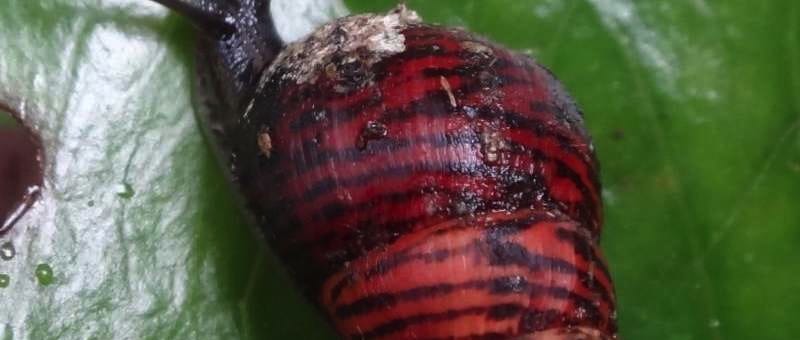Share this article
Hawaii’s Invertebrates Dwindling Fast
Hawaii was once known for its diversity in colorful plants and assorted wildlife. However, in recent decades researchers have noted extreme losses and have even deemed the islands the “extinction capital of the world.”
Further, researchers had never considered the loss of biodiversity in wildlife that might not be as easy to detect with the naked eye — invertebrates, which include insects, snails and spiders. This was what drove scientists from the Pacific Biosciences Research Center (PBRC) at the University of Hawaii at Manoa and other collaborators to study how these small, but important, creatures are faring in an ecosystem experiencing tremendous biodiversity loss. Their research was published in the journal Conservation Biology.
The research team narrowed in on the most diverse group of Hawaiian land snails in the family Amastridae, with 325 species recognized in Hawaii. They found only 15 of the 325 reported species and from that number estimated the extinction rate for the snails could have been as high as a 14 percent per decade.
In another study published in the Proceedings of the National Academy of Sciences, members of the same team looked at invertebrate extinction globally. They wanted to find the extent to which the “sixth mass extinction” theory is true — a theory that suggests the earth is in the middle of a massive biodiversity extinction crisis due to human activity.
While only 800 species of the 1.9 million of the world’s total species are listed as extinct on the International Union for Conservation of Nature (IUCN) “Red List,” in this study, researchers found that there is a much larger loss than reported.
“We showed, based on extrapolation from a random sample of land snail species from all over the world, and via two independent approaches, that we may already have lost seven percent or 130,000 extinctions of all the animal species on Earth,” said Robert Cowie, research professor at PBRC and coauthor of the two studies in a press release.
The IUCN Red List numbers include only birds and mammals and don’t account for invertebrates although they make up about 99 percent of known biodiversity.
The researchers said that their findings show the biodiversity crisis is real. They also stressed the importance of including invertebrates in assessments of biodiversity in order to see the big picture when studying biodiversity.
Header Image: A land snail species (Laminella sanguinea) in the amastrid family is on the island of O’ahu in the Waianae Mountains. Researchers found that snails in Hawaii as well as other invertebrates are declining, providing more evidence for the “sixth mass extinction” and loss of biodiversity in the world.
Image Credit: Kenneth Hayes








